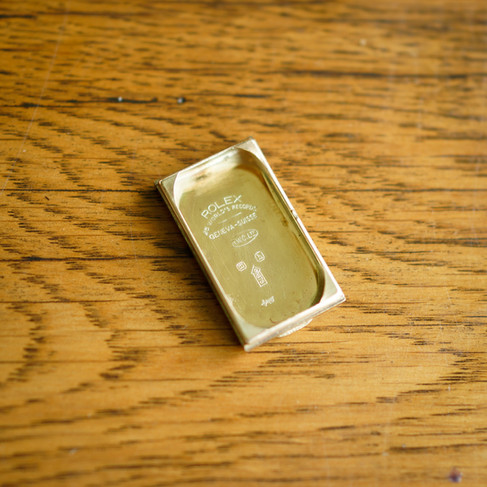I admit… I might have a thing for rectangular watches.
Perhaps it’s the shape - the refusal of conforming to the norm of watches being round, and a clear reference to my favorite Art Deco era - that makes them stand out and become instantly recognizable.
We've talked about the iconic design of the Cartier Tank Basculante in our previous blog (If you missed it, feel free to check it out here). However, today I want to share with you not just any rectangular watch… but THE pioneer that started it all: the original Rolex Prince.

A Little Bit of History
Before we dive into this particular beauty of 1930's Rolex Prince Brancard, I think it’s worthwhile to first talk about some background history…
The time was 1920, World War I had just ended and the entire Europe was busy rebuilding and recovering. Soldiers have gotten use to the practicality of wearing wristwatches and brought the trend back home.
Though wristwatch was no longer seen as “effeminate” as it used to, its accuracy was still questionable as it’s prone to receive much more movement impact, hence potential damages, as opposed to a well protected pocket watch sitting in a gentleman’s vest pocket.

Rolex was ready to dive in and make most of the new trend in wristwatches, however, its first obstacle was how to improve their accuracy. This is where Aegler, Rolex’s long term supplier and recently made exclusive partner, comes in handy.
In fact, this joint forces also led to many innovations in watchmaking, ultimately setting Rolex apart from its competitors to its global success today. The invention of the Prince movement was one of them.

Technical Details
What’s special about the Prince movement was that it placed the winding barrel and the balance on opposite ends of the watch. By doing so, it allowed both components to be much larger than the conventional layout.
A larger winding barrel means more power reserve on a single wind. According to Rolex advertisement, the watch “goes for 58 hours on one winding”, which was truly astonishing for the time.
On the other hand, a larger and heavier balance wheel translates to better accuracy. Holding itself at the highest industry standards at the time, Rolex went as far as adding solid gold screws to the wheel to provide more weight, hence more momentum and accuracy.
In combination with high quality finish, the Prince indeed became one of the most accurate wristwatch made up until that time. In fact, almost all Prince watches sold in Britain were sold along with chronometer certificates. Many of them were even observatory tested, which was the case for this particular example we have.
The “Doctor’s Watch”
We are all familiar with the Prince being referred to as the “Doctor’s watch”. With the enlarged second hand and sub-dial, it’s only natural to assume that they’d come in handy for doctors’ need.
While that assumption may be true, some suggest an alternative idea. According to renowned Rolex expert and collector James Dowling, it was actually the patients, possibly influenced by Rolex's marketing efforts, gifting the watch to doctors as a token of gratitude that gave it its name.
Indeed, it’s worth noting that the Prince was not the first watch Rolex marketed specifically towards the doctors. Being the trailblazer of modern marketing, Rolex have advertised their sweep second watches as “being particularly suitable for the medical profession”, whose production dates back to 1914.


Aesthetic Beauty
Back to this particular example: the perfect embodiment of the iconic Brancard style, with flared sides in contrasting yellow and white gold colors. A clever answer to improve wearability of the elongated shape (and in my opinion a marvelous design solution), the lugs bend downwards, forming a smooth curve with the arched crystal.
The chronometer signed dial, also done in matching two-tone design with silver accents, complements the overall case design, while accentuating the Art Deco shapes and font.
The import marks inside the case back indicate that this watch was imported to United Kingdom through Glasgow in 1930 (or the early half of 1931 to be precise).
The movement was made of the ultra prima grade, the highest grade available from Rolex at the time, certified and signed "observatory quality".
To learn more about this original Rolex Prince, check out our Boutique listing here: ROLEX PRINCE BRANCARD, 9K WHITE AND YELLOW GOLD, REF. 971U, circa 1930








Comments